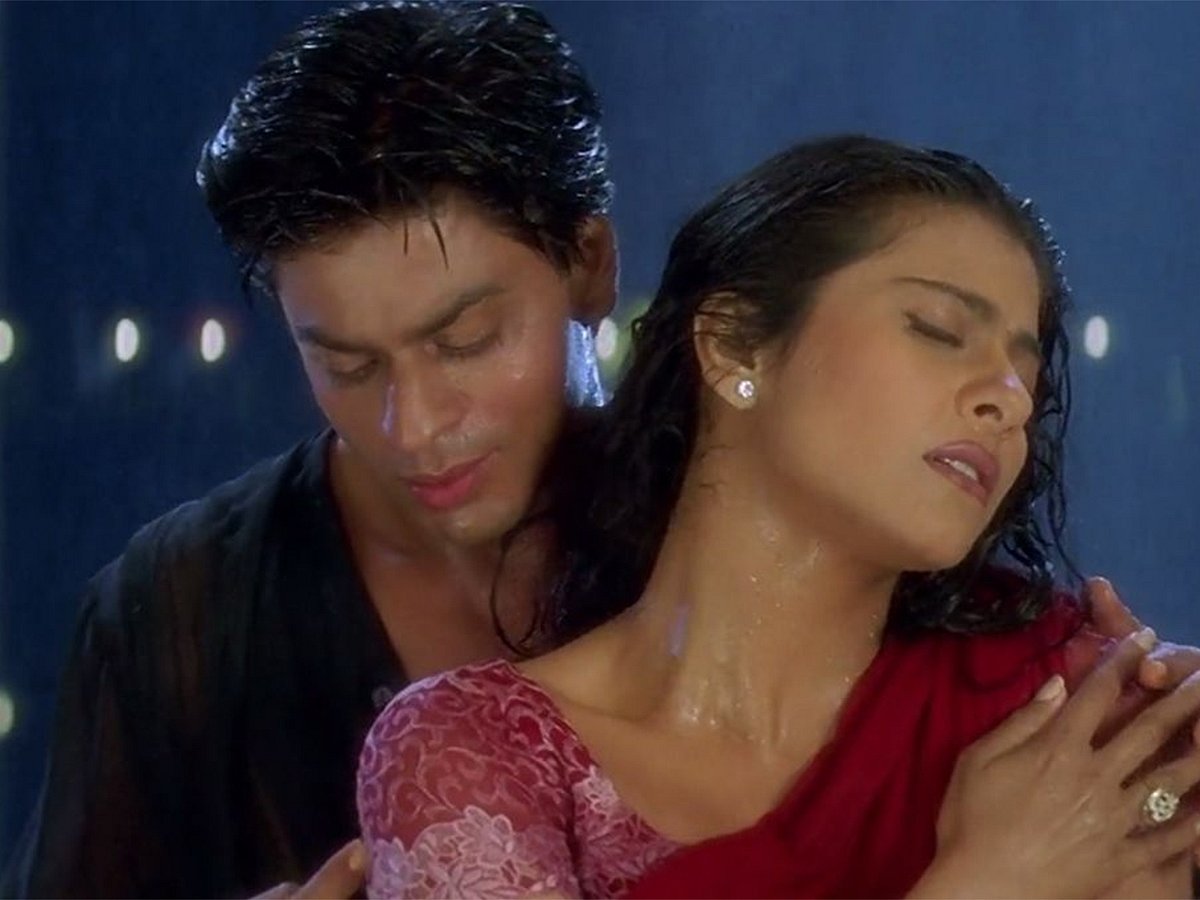As Dubai welcomes rain and unpredictable weather, a look at Bollywood's love affair with monsoons
Kissing was taboo, but Bollywood filmmakers found inventive ways to show romance on screen

Dubai: Long before Bollywood discovered the humble lip-lock, we had thunder, lightning, and bodacious leading ladies in very transparent chiffon saris doing all the talking. Rain wasn’t climate; it was chemistry for Bollywood filmmakers. Rain-soaked saris gave Hindi cinema its most stylish metaphor for seduction. What Hollywood sealed with a kiss, we drenched in desire and monsoon.
Take Shree 420’s “Pyaar Hua Iqraar Hua.” Raj Kapoor and Nargis didn’t need steamy kisses; they had one umbrella and a universe of chemistry. As the rain poured down, innocence met yearning, and that wet sari became cinema’s most elegant act of seduction.
Black and white never looked this suggestive — and yet, it was all perfectly decent and PG-approved.
Fast-forward to Manzil’s “Rimjhim Gire Saawan,” where Amitabh Bachchan and Moushumi Chatterjee stroll through a rain-drenched Mumbai, making every puddle look like poetry. There are no over-the-top gestures, no sweeping violins — just laughter, glances, and a city glistening like glass. Love looked ordinary, but oh, how gorgeously so.
Then came the 1990s, and Bollywood decided subtlety was overrated. Enter Raveena Tandon in Tip Tip Barsa Pani, wearing that iconic yellow chiffon sari and rewriting the definition of “wet look.” Akshay Kumar didn’t have to do much — the rain did all the talking. Desire, devotion, and danger — it was all there, one drop at a time.
And who can forget Kajol in Yeh Dillagi or Madhuri Dixit in pretty much any ‘90s downpour? Rain was their co-star, their accessory, their mood lighting. It wasn’t just about getting drenched — it was about unleashing emotions, turning coyness into chemistry and elegance into electricity.
Even Kuch Kuch Hota Hai used rain as Cupid. When Rahul and Anjali reunite in that misty camp sequence, it isn’t dialogue that reignites their love — it’s drizzle. The monsoon washed away years of ego and heartbreak, leaving nothing but honesty behind.
From Raj Kapoor’s umbrella to Raveena’s sari, rain has always been Bollywood’s most reliable wingman.
It gave lovers courage, softened heartbreak, and made sensuality respectable. Decades later, no matter how much technology or tonality changes, the monsoon remains Bollywood’s favourite accomplice.
Because in Bollywood, when it rains, it never just rains — it romances, teases, and seduces in technicolour.
And honestly, who needs kissing when you’ve got thunder, lightning, and chiffon working overtime?
Why rain songs in Bollywood worked for decades:
Cultural Acceptability: Audiences, before the streaming platforms boom, found overt physical intimacy in films controversial. Rain songs felt more classical, poetic, and acceptable.
Censor Tolerance: The rain and wet-cling visuals were more likely to survive censor cuts in India than direct contact.
Emotional Multiplexing: Rain sequences often layered multiple tones — romantic, dramatic, nostalgic, even violent — making them rich cinematic moments.
Visual & Musical Richness: Bollywood is a musical cinema. Rain gave cinematographers and composers new textures: thunder, reflections, wet streets, droplets — all tools to evoke mood.
Metaphoric Latitude: Rain is universal and symbolic. It can mean cleansing, longing, conflict, rebirth — you can fuse those meanings with love scenes, giving the filmmakers narrative flexibility.
Network Links
GN StoreDownload our app
© Al Nisr Publishing LLC 2025. All rights reserved.